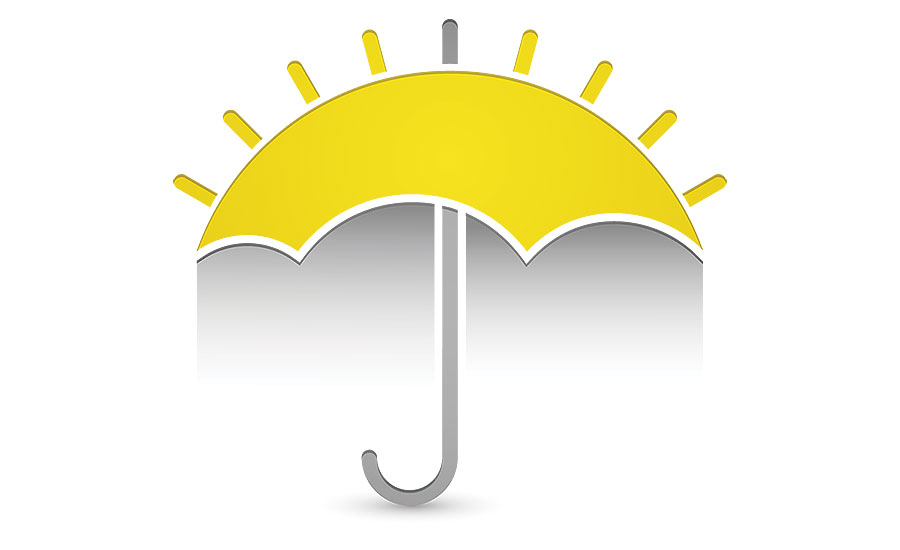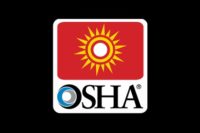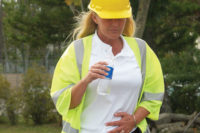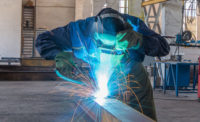Who is at risk?
Any worker exposed to hot and humid conditions is at risk of heat illness, especially those doing heavy work tasks or using bulky protective clothing and equipment. Some workers might be at greater risk than others if they have not built up a tolerance to hot conditions.
Industries most affected by heat-related illness are: construction; trade, transportation and utilities; agriculture; building, grounds maintenance; landscaping services; and support activities for oil and gas operations.
Practice prevention
Employers should establish a complete heat illness prevention program that includes: providing workers with water, rest and shade; gradually increasing workloads and allowing more frequent breaks for new workers or workers who have been away for a week or more — and for all workers on the first day of a sudden heat wave — to build a tolerance for working in the heat (acclimatization); modifying work schedules as necessary; planning for emergencies and training workers about the symptoms of heat-related illnesses and their prevention; and monitoring workers for signs of illness.
To prevent heat related illness and fatalities:
- Drink water every 15 minutes, even if you are not thirsty.
- Rest in the shade to cool down.
- Wear a hat and light-colored clothing.
- Learn the signs of heat illness and what to do in an emergency.
- Keep an eye on fellow workers.
- “Easy does it” on your first days of work in the heat. You need to get used to it.
Source:
OSHA, www.osha.gov/SLTC/heatillness/index.html?utm_source=Twitter
Stay cool
There are a number of products on the market today designed to help you put these heat stress prevention tips into practice. If you’re not already using these products, you might want to consider making them part of your heat stress prevention plan. Here are just some of the options out there:
Cooling products: Personal cooling products use different types of cooling technology, such as special reusable cooling packs; material or cooling crystals activated by soaking with water; or a tubing system stitched to clothing material that is supplied with cool water from an attached unit. Products come in many forms, including hats, vests, pants, headbands, wrist wraps, ankle wraps, bandanas, neck shades, towels and more.
Heat stress monitors: Different kinds of monitors are available to measure personal or environmental risk factors for heat stress. Personal monitors measure a worker’s core body temperature and will alert the user when he or she is experiencing elevated body temperatures. Monitors can also provide data to help employers evaluate an individual’s response to heat stress loads and develop preventative measures. Area monitors or meters are used to measure heat conditions. These instruments generally calculate both indoor and outdoor Wet Bulb Globe Temperature (WBGT) index according to established ACGIH (American Conference of Industrial Hygienist) Threshold Limit Value equations. With this information and information on the type of work being performed, heat stress meters can determine how long a person can safely work or remain in a particular hot environment.
Electrolyte replacement drinks: Drinks formulated to replace electrolytes lost through sweating and maintain the body’s proper fluid balance to keep workers hydrated. Drinks come in a variety of flavors, individual and bulk serving options, and can be purchased in many forms that include powder mix, liquid concentrate, ready-made drinks or even freeze pops.
Hydration packs: These hydration systems are incorporated into a backpack or waist pack and contain a reservoir or bladder that can be filled with water or another hydrating beverage. A tube or hose allows the wearer to drink hands-free.
Fans & blowers: Providing personal or area cooling, fans and blowers that aid in heat stress prevention range from handheld misting devices to larger units that actively circulate or cool air.
Sun shelters: Umbrellas, tents, canopies and other temporary, portable structures provide shade and give workers relief from the sun.
Heat stress training: Training programs are available to educate workers on recognizing the signs and symptoms of heat stress and prepare them to administer first aid if necessary. Training can also teach workers the proper precautions to take to head off heat stress on the job.




